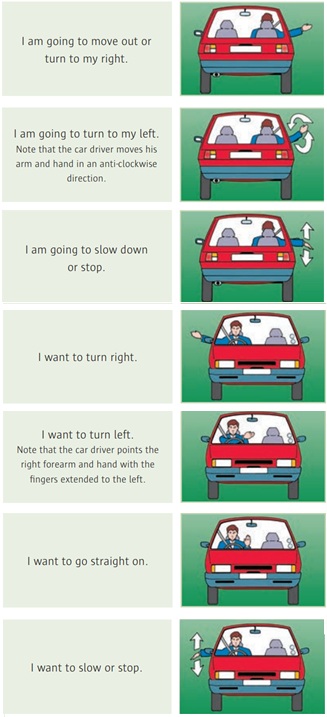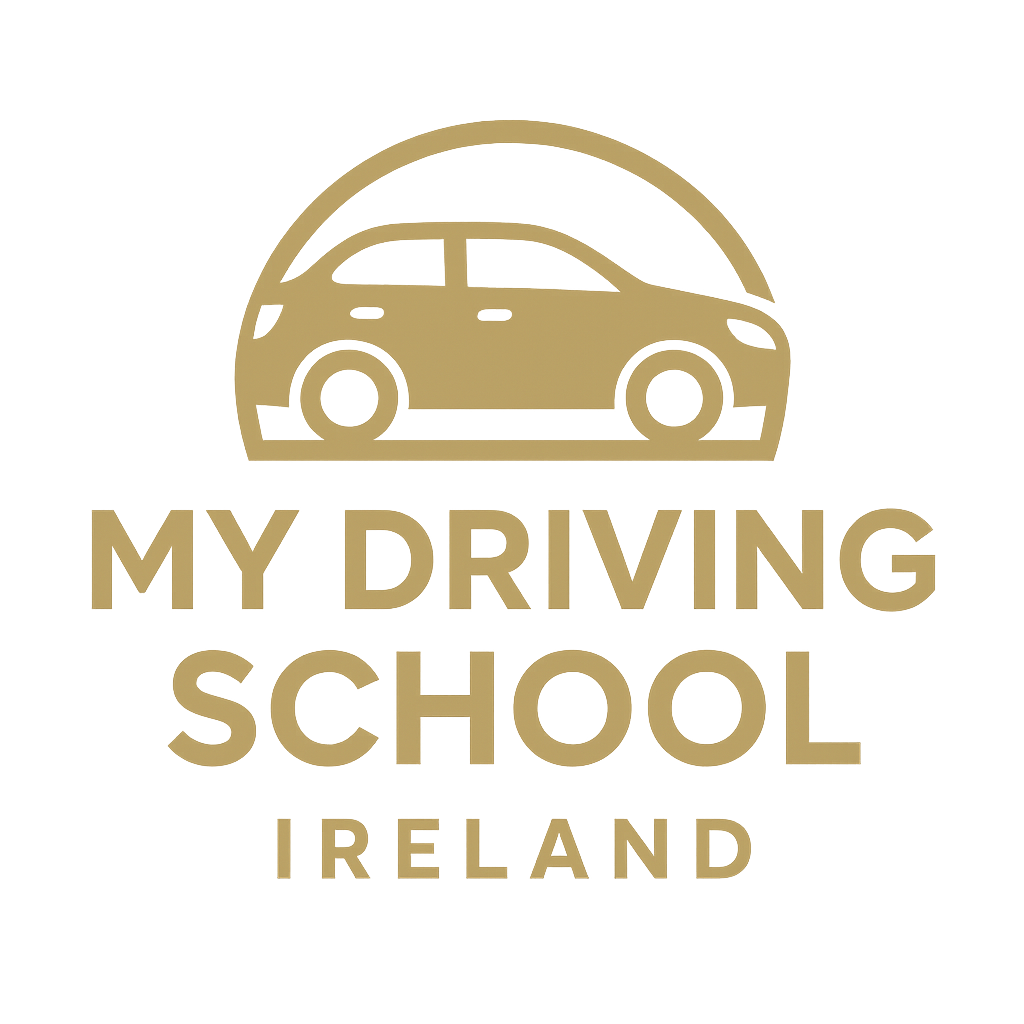Prepare for your test
Below are the most frequently asked questions by driving test examiners, including bonnet checks, hand gestures and signs.
If you notice any important questions we've missed, please email info@mydriving.ie to help us improve this resource for future learners.
1. How should you react to flashing red traffic lights?
Stop immediately - these indicate an approaching train.
2. What's the proper following distance in dry conditions?
3. When must you dip your headlights?
When meeting traffic, following closely, on lit roads, in poor visibility (fog/snow), or to avoid dazzling others.
4. How close can you park to a pedestrian crossing?
No parking within 15m before or 5m after the crossing.
5. What's the minimum legal tread depth for car tyres in Ireland?
1.6mm (across the central ¾ of the tyre and around the full circumference).
6. How would you check the engine oil level?
Park on level ground, wait for the engine to cool, pull out the dipstick, wipe it, reinsert it, then check the level is between min/max marks.
7. What do double solid yellow lines at the roadside mean?
Parking prohibited at all times.
8. When can you enter a yellow box junction?
Only if your exit is clear, except when turning right (may wait if not blocking priority traffic).
9. What should you do if dazzled by headlights?
Slow down, look left toward the verge, and use your mirror's anti-dazzle feature if available.
10. What's the speed limit on national roads vs motorways?
National roads: 100km/h
Motorways: 120km/h
11. How do you handle a staggered pelican crossing with an island?
Treat it as two separate crossings.
12. When shouldn't you use your horn?
In built-up areas between 11:30pm-7:00am unless in emergency.
13. What's the rule for parking near junctions?
Stay more than 5 meters away.
14. How do you identify a no-entry road?
Solid and broken white lines with "NO ENTRY" signage.
15. What should you do at an amber traffic light?
Stop unless unsafe to do so.
16. Where is overtaking prohibited?
Near bends, hills, bridges, continuous lines, junctions, or narrow roads.
17. What does a single solid yellow line indicate?
No parking during specified times.
18. How should you position for a right turn in a one-way street?
Stay as far right as possible.
19. What do white zig-zags at crossings mean?
No parking or overtaking.
20. Who has priority at unmarked equal crossroads?
Yield to traffic from your right.
21. What's the urban speed limit unless signed otherwise?
50km/h (may be 30km/h or 60km/h in special zones).
22. How do you recognize hatched road markings?
Diagonal/chevron patterns marking no-entry zones for traffic separation.
23. What should you never do when being overtaken?
Increase your speed.
24. What does a yield sign require?
Give way to priority traffic and only proceed when safe.
25. When is coasting dangerous?
When disengaging gears/clutch - reduces vehicle control.
26. What's the rule for roundabout priority?
Yield to traffic already on the roundabout.
27. How far from the kerb should you park?
Within 45cm (about 1.5 feet).
28. What does a filter light allow?
Movement in the arrow's direction when safe.
29. Where are U-turns prohibited?
One-way streets, across continuous lines, or where signed.
30. What factors impair driving ability?
Alcohol, drugs, fatigue, distractions, and emotional state.
31. How to cross a dual carriageway with a narrow median?
Wait until you can cross completely if the median is too small.
32. What distinguishes motorways from dual carriageways?
Motorways have no roundabouts/junctions, left-only exits, and higher speed limits.
33. Who's responsible for adult vs minor seatbelts?
Driver (under 17s)
Passengers (17+).
34. What should you watch for on rural roads?
Animals, hidden entrances, slow vehicles, and poor surfaces.
35. What does tailgating mean?
Following too closely - reduces reaction time.
36. Which lane should you use on multi-lane roads?
Left lane (Lane 1) unless overtaking or directed otherwise.
37. What does a flashing amber light at crossings mean?
Proceed with caution - pedestrians have right of way.
38. How to recognize zebra vs pelican crossings?
Zebra: Orange beacons & uncontrolled
Pelican: Traffic light-controlled.
39. What's the stopping rule at unsigned stop signs?
Stop at the sign itself.
40. Which line takes precedence when center lines differ?
Obey the line nearest to your vehicle.
41. Can you proceed through a red light if an emergency vehicle approaches from behind?
No. Move aside if possible, but never break traffic signals—emergency vehicles will find a way around.
42. What should you check before changing lanes?
Mirrors, blind spots, and signal in advance. Ensure there's enough space to move safely.
43. What should you do if your tyre bursts while driving?
Hold the steering firmly, ease off the accelerator, and brake gently once under control.
44. What's Ireland's legal blood alcohol limit for novice drivers?
0.0%—strict zero tolerance for learners and newly licensed drivers.
45. When can you use a mobile phone while driving?
Only if parked safely.
46. What's the safest following distance in heavy rain?
Double the 2-second rule to 4 seconds for extra braking time.
47. When can you use the hard shoulder on a motorway?
Only in emergencies or if directed by signs/officials (e.g., during breakdowns).
48. Can you park opposite a continuous white line?
No—it's illegal to park where it would force others to cross the line.
49. What's the danger of underinflated tyres?
Reduced grip, longer braking distances, and increased risk of blowouts.
50. What extra space should you leave when passing cyclists?
At least 1 meter in zones under 50km/h, 1.5 meters in higher speed areas.

1st image (Coolant Reservoir): Identify by the temperature symbol. Check fluid level (pink/blue) between MIN/MAX marks.
2nd image (Engine Oil Dipstick): Remove, wipe, reinsert, then check level between MIN/MAX.
3rd image (Brake Fluid Reservoir): Located near the firewall; verify level within marked range.
4th image (Washer Fluid Tank): Fill to top when low (no MIN/MAX; use screen wash solution).
5th image (Engine Oil Reservoir): Only refill if the dashboard warning light indicates low oil.
Hand Gestures

Source: Rules of the road by the RSA
View and Download Rules_Of_The_Road
